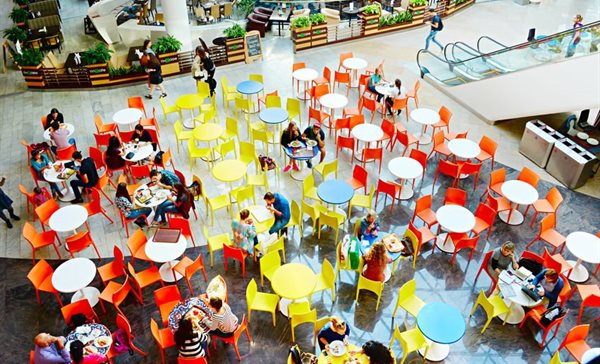In recent months, StatsSA's restaurant, take-aways and catering retail sales appears to have served as further indication, over and above weak goods retail sales growth, that the retail and retail property sectors are headed into tougher times.
Slowing growth trend
On a year-on-year basis, total restaurant, catering and take-aways retail sales income growth recorded 5.2% in September. This is slightly faster growth than August’s 5.1%, but this is insignificant.
However, as monthly figures are volatile, we prefer to use a 3-month moving average in order to better see the short term trends in the data. On a 3-month moving average basis, for the 3-months to September the year-on-year growth rate was 4%, which continued a steadily slowing growth trend all the way from a high of 12.5% for the 3 months to January 2019.
There has thus been a sharp slowing in year-on-year growth in total sales as 2019 has progressed.
In real (inflation-adjusted) terms, the most recent sales growth rates narrowly remain in positive territory, the September year-on-year rate recording a lowly 1%, while for the 3 months to September the year-on-year rate was a meagre 0,2%.
We inflation-adjusted using the CPI for hotels and catering, which recorded a low inflation rate of 4.2% in September.
Take-aways and bar sales holding up
There exists one theory that, with take-aways being the more affordable “eat out” option than restaurants and coffee shops, the revenue growth of the former would hold up better than the latter. For much of the last decade of mediocre economic growth performance, this appears to have been the case, with take-aways outperforming the revenue growth of restaurants and coffee shops.
And of late the restaurant and coffee shop category does appear to have had a sharper slowdown in sales growth, recording a lowly 2.5% for the 3 months to September, while take-aways sales growth was 6.1%, although also slowing.
The third category, that of caterers, was somewhere in the middle of the other two, with growth in sales of 4.4%. However, caterers, arguably the luxury category of the three, has underperformed the other two in terms of sales growth for much of the current decade.
And then on to a second theory that is sometimes held which is that “in good time people drink and in bad times people drink”. This would imply that bar sales should be less cyclical than food sales.
The 3-months to September year-on-year growth rates do show bar sales growth of 4.7% holding up slightly better than the 4.2% of food sales. But this may merely indicate that economic times are not that bad yet, with the country managing to narrowly avoid recession at least for the time being.
Historically, bar sales actually appear far more cyclical than food sales. Around the 2008/9 short sharp recession, we saw bar sales decline year-on-year by a massive -12.6% for the 3-months to February 2009, whereas the worst that food sales ever declined around that period was -2.8% for the 3 months to December 2009.
So the data appears to show that tougher economic times may actually curb the drinking to an extent, and that bar sales can be more cyclical than food sales. Economic times just aren’t quite that tough as yet.
This restaurant, take away and catering retail data comes days after goods retail data for September pointed to a lowly +0,2% year-on-year growth rate for September, also reflecting a sharply weakened growth rate since the 8.4% multi-year high of November 2017.
Possible rise in retail centre vacancy rate
A weakened restaurant, take-aways and catering sales growth rate in the 3rd quarter of 2019, coming after last week’s poor goods retail sales figures for September, suggest that retailers had an even tougher 3rd quarter compared to the 2nd quarter.
This suggests the chance of possible further decline in profits in the retail and wholesale trade, catering and accommodation sector, whose net profit before taxation had already declined in value by -13.7% for the 4 quarters to the 2nd quarter of 2019.
Accompanying this weaker retail sales situation is likely to be a further rise in the average retail centre vacancy rate, which, according to MSCI half-yearly data has already risen from 2.9% in the 1st half of 2016 to 4.7% by the 1st half of 2019. This, in turn, places pressure on rental and income growth.
























